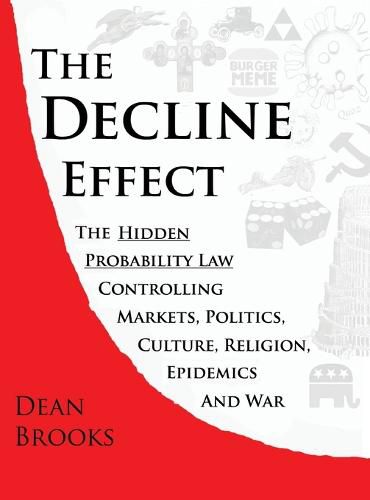Readings Newsletter
Become a Readings Member to make your shopping experience even easier.
Sign in or sign up for free!
You’re not far away from qualifying for FREE standard shipping within Australia
You’ve qualified for FREE standard shipping within Australia
The cart is loading…






This title is printed to order. This book may have been self-published. If so, we cannot guarantee the quality of the content. In the main most books will have gone through the editing process however some may not. We therefore suggest that you be aware of this before ordering this book. If in doubt check either the author or publisher’s details as we are unable to accept any returns unless they are faulty. Please contact us if you have any questions.
A crisis is coming for everyone who uses math and science. For decades now, the classical model of probability (the indifference principle and the Gaussian distribution) has been breaking down and revealing its limitations in fields from economics to epidemiology. Now a new approach has revealed the underlying non-classical principle behind all these 'anomalous' laws:
The general law behind all these particular laws (and countless others) is the "decline effect". As a system ages or grows in size, the rules of probability subtly change. Entropy increases, rare items become rarer, and average performance measures decline. The human meaning of a decline may be positive (decreasing costs, falling epidemic mortality) or negative (lower customer loyalty, decreasing efficiency), but the mathematical pattern is always the same. The implications are enormous, as these examples show:
All epidemic diseases decline in infectiousness and in lethality. HIV-AIDS went from a highly infectious, 95-percent fatal disease, to a survivable condition with a latency of decades. COVID-19 went from a death rate of 7 percent in early 2020, to under 2 percent in 2022.
Hereditary dynasties around the world declined smoothly in lifespan, from hundreds of years to tens of years. When democracies replaced monarchies, the decline (in spans of party control) continued.
$9.00 standard shipping within Australia
FREE standard shipping within Australia for orders over $100.00
Express & International shipping calculated at checkout
This title is printed to order. This book may have been self-published. If so, we cannot guarantee the quality of the content. In the main most books will have gone through the editing process however some may not. We therefore suggest that you be aware of this before ordering this book. If in doubt check either the author or publisher’s details as we are unable to accept any returns unless they are faulty. Please contact us if you have any questions.
A crisis is coming for everyone who uses math and science. For decades now, the classical model of probability (the indifference principle and the Gaussian distribution) has been breaking down and revealing its limitations in fields from economics to epidemiology. Now a new approach has revealed the underlying non-classical principle behind all these 'anomalous' laws:
The general law behind all these particular laws (and countless others) is the "decline effect". As a system ages or grows in size, the rules of probability subtly change. Entropy increases, rare items become rarer, and average performance measures decline. The human meaning of a decline may be positive (decreasing costs, falling epidemic mortality) or negative (lower customer loyalty, decreasing efficiency), but the mathematical pattern is always the same. The implications are enormous, as these examples show:
All epidemic diseases decline in infectiousness and in lethality. HIV-AIDS went from a highly infectious, 95-percent fatal disease, to a survivable condition with a latency of decades. COVID-19 went from a death rate of 7 percent in early 2020, to under 2 percent in 2022.
Hereditary dynasties around the world declined smoothly in lifespan, from hundreds of years to tens of years. When democracies replaced monarchies, the decline (in spans of party control) continued.